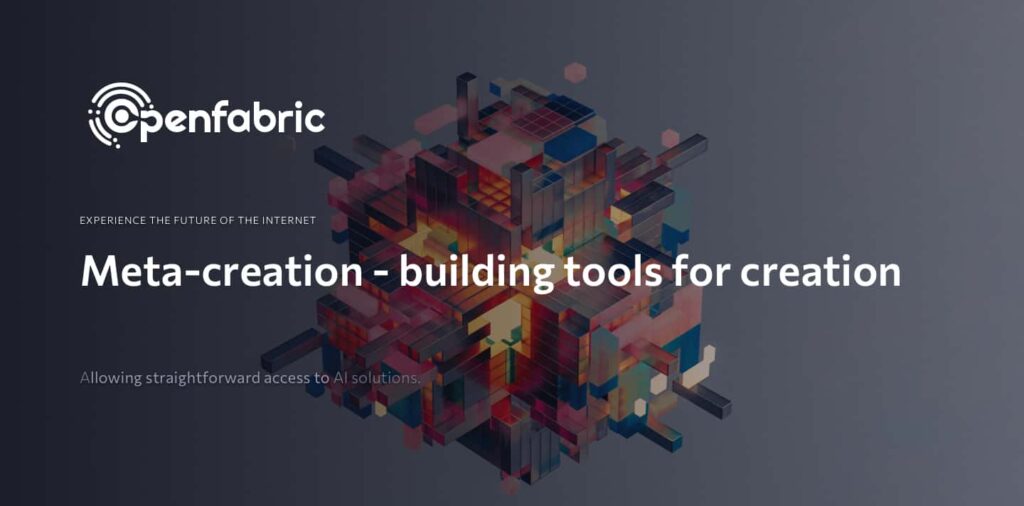
March 9, 2022 5 minutes read
Meta-creation – building tools for creation

Coming up with something new is nothing short of magic. Human ingenuity knows no bounds and our ability to think and conjure up things out of virtually nothing has enabled us to make such tremendous progress.
Idea creation is a fascinating topic and the more you delve into it, the more you realize the power and key role that ideas have in innovation and progress. While idea creation is the first step, there is more to it than just coming up with a thought. Here, we take a look at the creation process and try to understand the significance it holds for our future.
Why is idea creation so difficult?
By nature, humans are conditioned to follow the prevailing logic. Studies have shown that most individuals conform to the common belief of the group. This is attributed to two common reasons, wanting to fit in due to peer pressure and secondly, having the belief that the group is well informed.
People tend to take the path of least resistance and stay within their comfort zone. True progress and growth only come once a person steps out of the confines of this comfort zone. Our systems are also designed in a way that favors established patterns. Whole industries are optimized to run along a certain process of doing things. Due to this, change is frowned upon and thus innovation, disruption, and new ideas are difficult in environments in which incremental innovation is favored.
The significance of writing down ideas
When you write down an idea or thought, you take the first step towards making it a reality. The process of writing helps you identify the incompleteness of the idea and eventually leads you to fine-tune it.
A written idea can be objectively analyzed after reading it from the perspective of a neutral reader. Paul Graham in his famous blog goes as far as to say,
“If writing down your ideas always makes them more precise and more complete, then no one who hasn’t written about a topic has fully formed ideas about it. And someone who never writes has no fully formed ideas about anything nontrivial.”
In essence, this means that unless an idea is written and subjected to the litmus test, it does not qualify as a fully formed idea. At times the creator may not even realize this and go ahead without critically examining his thoughts.
One thing worth noting is that even though writing down an idea helps make it complete but this does not necessarily mean that it is the right idea. Nevertheless, it certainly helps with the process.
Understanding the creation hierarchy
Ideas lead us to creation. It must be understood that all creations are not the same. Based on their impact, let us divide creations into a three-tiered pyramid in order to understand them better.
Tier 3: Create something
It all starts with thinking about something and materializing it by bringing it out in the real world. As we discussed before, creation is a difficult process and not everyone goes down this road. Most of the content we see online is just created by a small number of individuals. In fact, the popular 1% rule states that only 1% of the people in any online community create original content. 9% interact with that content and contribute in the form of likes or comments. The rest 90% are mere observers that scroll through.
Tier 2: Create something useful
It’s not just about creating something but that something has to provide meaning and value to people. This ‘value’ can be translated to providing some practical application. In this sense, all inventions like cell phones, computers, even your shoes or a pen and paper fall under this category. Services like Uber that solve people’s problems are also a big part of this tier.
Naturally, creating something of value is even more difficult than just creating something. It is a painstaking and long process that involves careful research, planning, and execution. So, is there something even more powerful than a creation that provides value?
Tier 1: Create something used to create
This is the top of the pyramid. A truly disruptive creation that empowers people to become creators themselves. Examples of such tools include 3D printers or software like Adobe Photoshop. Such tools really allow users to become creators and put their creativity to the test.
A tool that allows people to become creators is immensely consequential. It acts as an enabler and its impact spreads far and wide. Consider how Photoshop has enabled thousands of businesses to form and use the tool to create valuable content for a wide array of audiences across multiple domains.
Openfabric – the ultimate meta creation tool
The impending AI revolution is set to bring about massive transformation across almost every industry and our way of life. As such, a tool that harnesses the power of AI while also enabling individuals to become creators themselves would be a total game-changer. Luckily for us, Openfabric has presented the world with a decentralized AI platform in which the collaboration between AI innovators, data providers, businesses, and infrastructure providers will facilitate the creation and use of new intelligent algorithms and services.
The platform not only supports and helps foster creators but also makes sure that no one is left behind. Inclusivity is a key proponent of Openfabric because we realize that it is essential for stable and sustained economic growth. This means giving everyone a fair shot at accessing the tools, knowledge, or resources needed to create value for themselves and for others.
Openfabric is on a mission to help AI developers reach customers and monetize their work and by making it easier for both technical and non-tech users to tap into the vast potential and power of AI, Openfabric is leveling the playing field, removing access barriers, changing norms, and aims to popularize the quick, easy, and low-cost integration of AI capabilities that will drive the next wave of wealth creation and technological advancement.
If you are interested in learning how the platform will allow you to become creators and play a vital part in the AI revolution, you can read the whitepaper. For the latest updates, stay tuned to our twitter.

